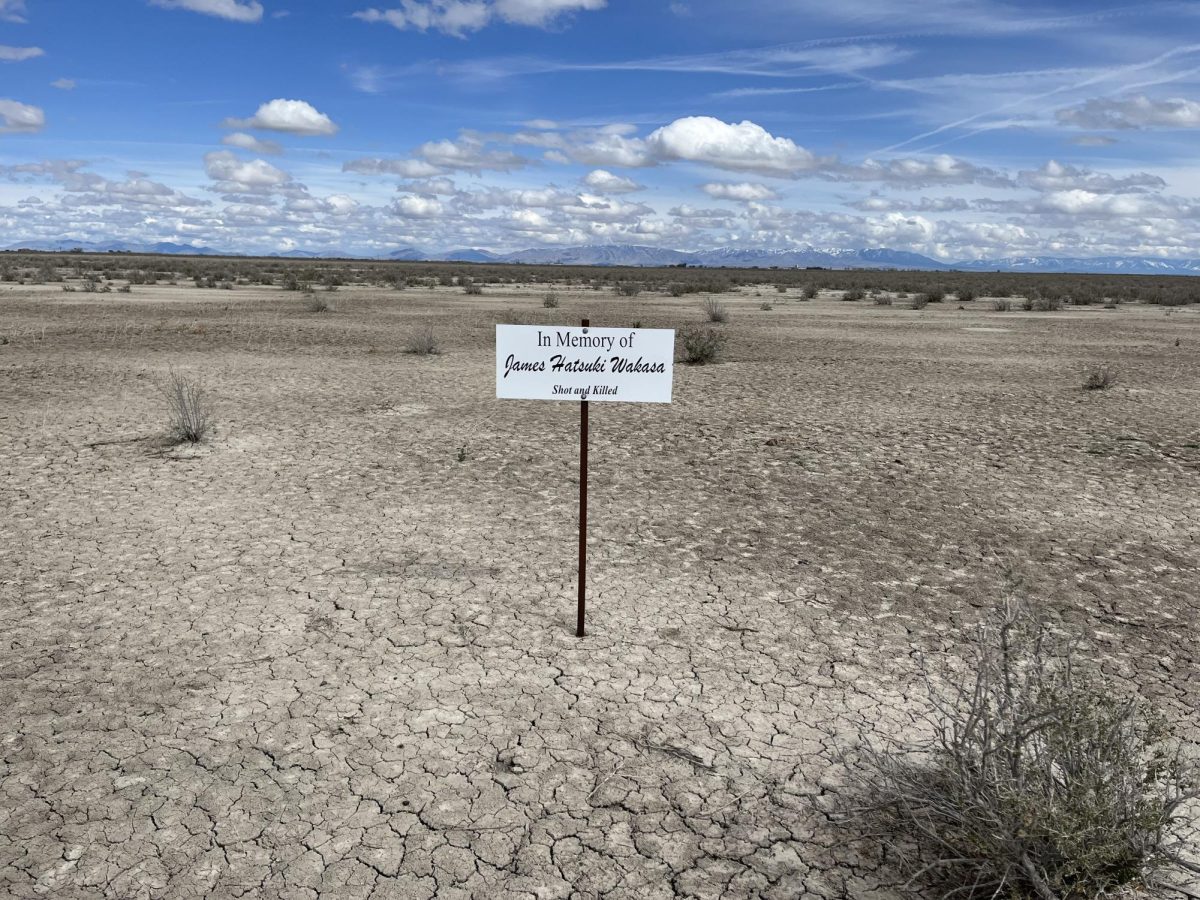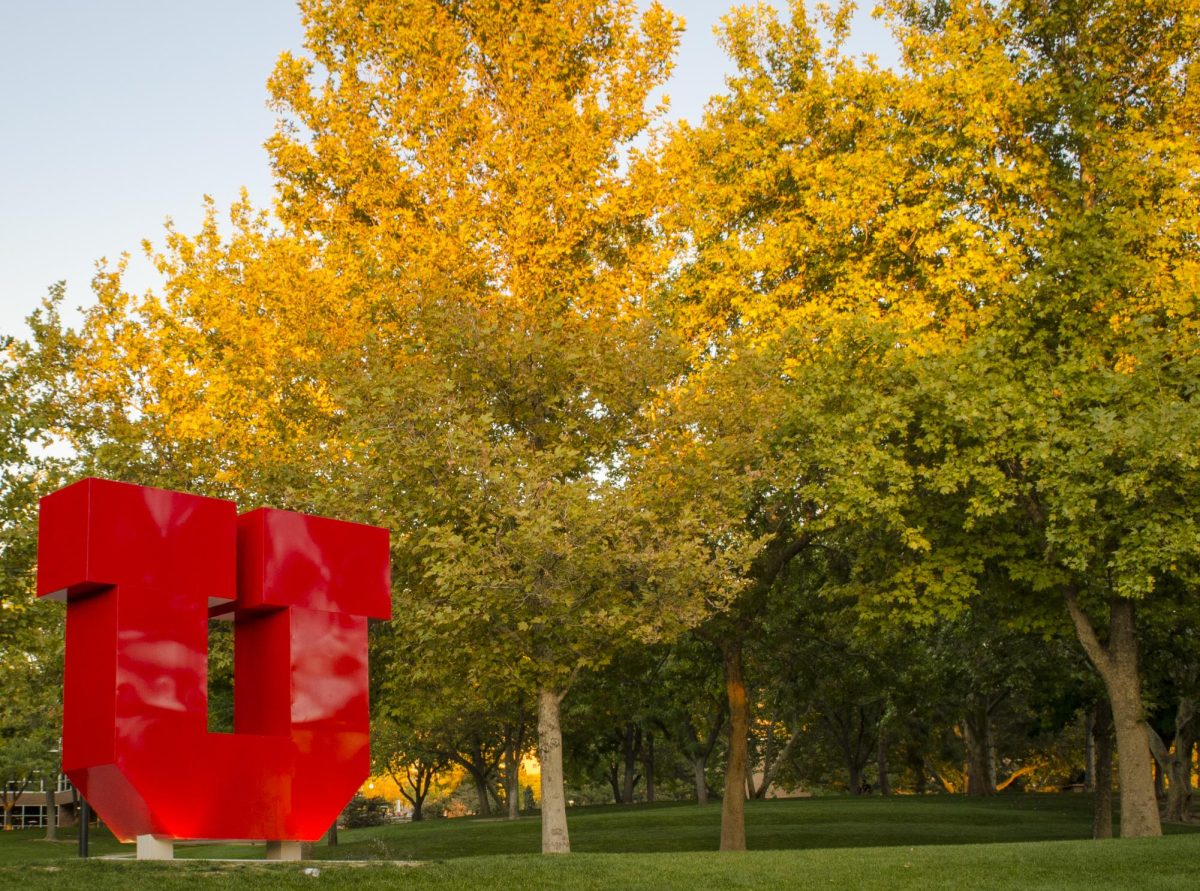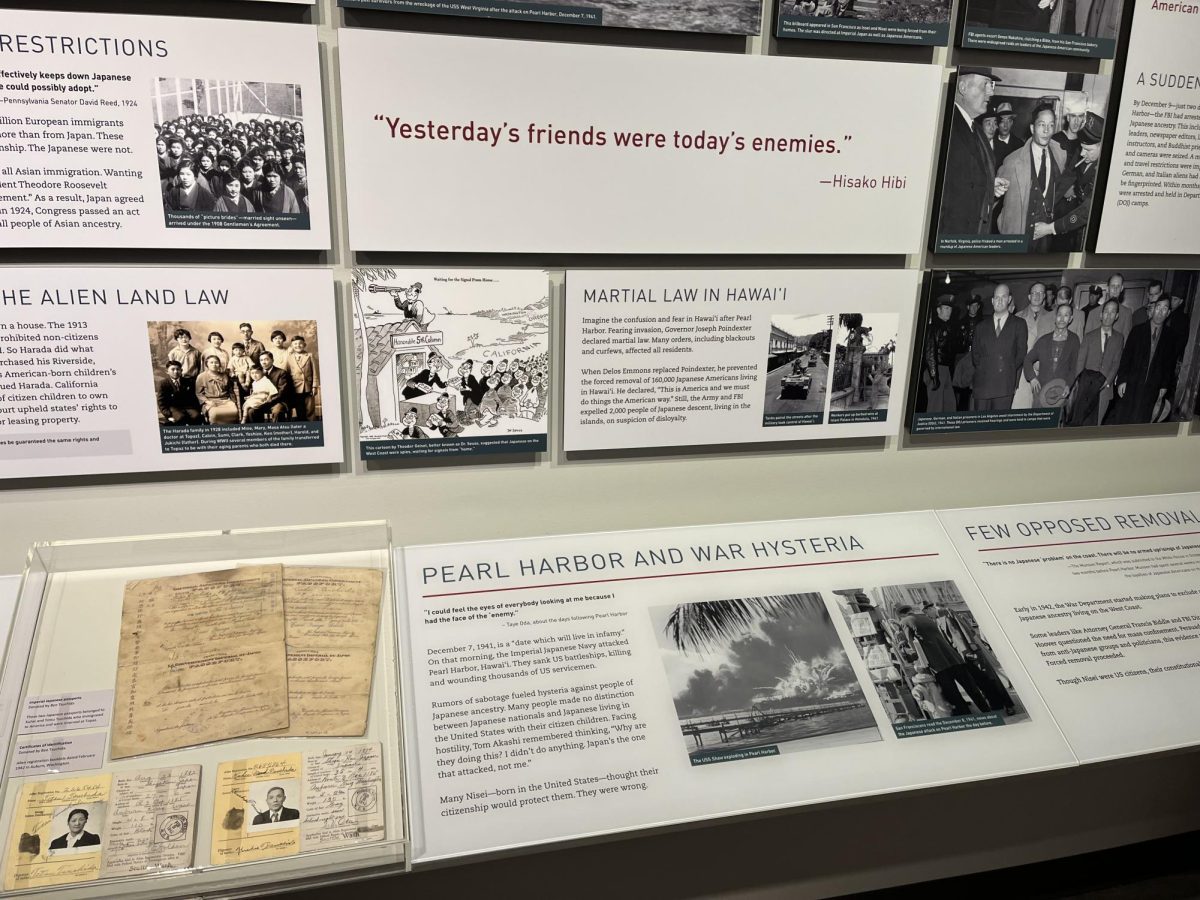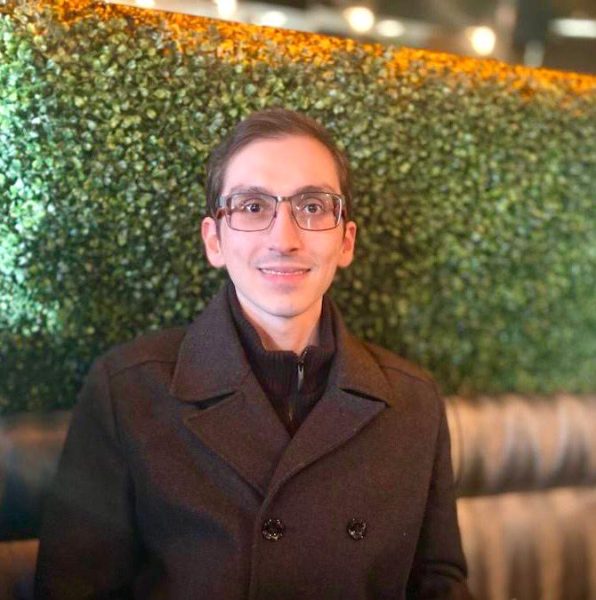The American West Center at the University of Utah hosted a three-day symposium about the legacy of Japanese American incarceration during World War II. The event featured historians, artists and scholars sharing their perspectives on the history and memory of the camps.
In 1942, President Franklin D. Roosevelt issued an executive order that incarcerated over 120,000 Japanese and Japanese American people.
The symposium started with a presentation by Stephanie Hinnershitz, professor of security and military studies at Air Command and Staff College at Maxwell Air Force Base. Hinnershitz’s presentation was based on her book “Japanese American Incarceration: The Camps and Coerced Labor During World War II.”
A reading and a Q&A by poet and author Brandon Shimoda at the Finch Lane Art Gallery followed Hinnershitz’s lecture. Shimoda wrote “The Grave on the Wall,” a memoir about his grandfather who was incarcerated in a prison camp during WWII.
Shimoda also read the first chapter of his upcoming book about the afterlife of Japanese incarceration.
Some of the sections Shimoda read from his book were about the killing of James Hatsuaki Wakasa and the discovery of his memorial monument.
Wakasa was an elderly man who was shot by a soldier while walking his dog near a barbed wire fence in the Topaz concentration camp in central Utah. The soldier said he fired a warning shot, which struck Wakasa in the chest. The soldier was found not guilty of manslaughter.
Thousands of prisoners attended Wakasa’s funeral and erected a monument in his honor. The monument was believed to be destroyed but was rediscovered in September 2020.
The Topaz Museum board decided not to display the monument due to fears of vandalism, which sparked controversy over the museum’s failure to involve members of the Japanese American community in its decision.
Day two of the symposium featured a presentation and screening of three short films by filmmaker and artist TT Takemoto at the Utah Museum of Fine Arts.
“My queer trilogy films are inspired by first-generation Japanese Americans who left subtle yet discernible traces of same-sex intimacy or defiance of gender norms,” Takemoto said. “Although these projects are grounded in research, they do not follow the standard genre conventions of documentary or narrative fiction films. Rather, these films attempt to animate queer history through experimental modes of speculation that emphasize the sensory and emotional qualities of remembrance.”
One of the films screened was Warning Shot, which tells the story of Wakasa’s killing from conflicting accounts — including the perspective of Wakasa’s dog.

A roundtable discussion with Takemoto, Shimoda and Hinnershitz followed the screenings
The panelists first discussed their thoughts on problematic terminology and what terms memorialization of Japanese incarceration should be built around.
“I use ‘incarceration’ in my own work, and I use that phrase because the scholars I read when I learned about this topic used incarceration, and their explanation was … that this was not internment because 80% of the individuals who were forcibly removed by the army and then placed in these camps and held there were American citizens,” Hinnershitz said. “So ‘internment’ doesn’t really directly fit because they were American-born.”
Hinnershitz added that while the term “concentration camp” is what the camps were referred to in the historical record, some historians are reluctant to use the phrase because of its connections to the Holocaust.
Shimoda said he uses the words concentration camp and incarceration “unabashedly,” but it took him a while to use them.
“‘Internment’ was the word my family used, and it was clearly a very sanitized way of describing it, but so were the stories …” he said. “I have family members who still talk about it in very rosy ways, and … to me those rosy depictions of trauma are part of the trauma, but it took me a long time to get from ‘internment’ to ‘incarceration’ and I think the value of the transformation between those terms was revealing the reality of the experience.”
The final day of the symposium was a bus ride down to the Topaz museum and a tour around the remnants of the incarceration camp. Wakasa’s memorial is currently not on display.














John Hedberg • Feb 24, 2024 at 5:53 pm
Think of the fear back then like the way today’s elitists call both Tulsi Gabbard (Progressive) and Donald Trump (conservative) “Putin Puppets”. In fact, anyone who doesn’t agree with the latest narrative out of the Equity priesthood is now called a racist, misogynist, transphobe, white supremacist (even if they’re African American), “Christian Nationalist”, or defamed as some kind of hater by the biggest group of haters since the end of WW2. It makes a good deflection cover for serial incompetence, corruption, and their own flagrant bigotry, while making a marvelous intimidation tool toward any doubters: “disagree with us, and we’ll falsely defame you with bad names and get you cancelled”, or as candidate Joe Biden put it to Charlamagne, “If you don’t vote for me, you ain’t black!”, which is the same fear-based dehumanizing way the social credit score system works in Communist China today, the way it worked in the Democrat South during their KKK Jim Crow years, and the way it worked in Nazi Germany prior to Kristallnacht. The only thing missing is the Star of David pinned to the jackets of anyone who disagrees, especially the innocent, since the innocent are the most dangerous to the liars in charge (LIC) and must be silenced at any cost.
Seriously, I think all the “grappling” over Japanese internment was dealt with in prior generations, if you read the history books. Japanese Americans also distinguished themselves during the war serving in the 442nd Regimental Combat Team, one of the most highly decorated units of WW2. They were so famous and highly lauded that their unit motto, “Go For Broke” (movie title, BTW), is still used by Americans of every flavor 80 years later by anyone giving 110% effort to some goal. That’s a heroic story worth telling again and again, much like the African Americans fighting in the Massachusetts 54th Regiment during the Civil War. No one who’s heard their story has any doubt about their bravery, their skill, or their unmatched heart~! We regard them every November 11th at 11:11, when the cannon fires in Fort Douglas to honor the courage and sacrifice of those who put their lives on the line for the best promises of the Declaration and the Constitution, the only ones like it in the world, in the most inclusive and class-fluid society in history. Before the English, the French, and the Americans banned slavery, it was the norm in every culture on every continent, and hundreds of thousands who never owned slaves died to share freedom & the Love of God’s children with those they never met and never would. We get to carry on that tradition in their memory, and as Dr. King spoke it, in the hope of all our united grandchildren together in our Great Melting Pot families from around the world (10 ethnicities in my family alone: family of xenophiles!). We’ve become a nation-family of new alloys never seen~!
Wow, it must be close to George Washington’s birthday: I’m getting all optimistic~! 😂
Cheerfully,